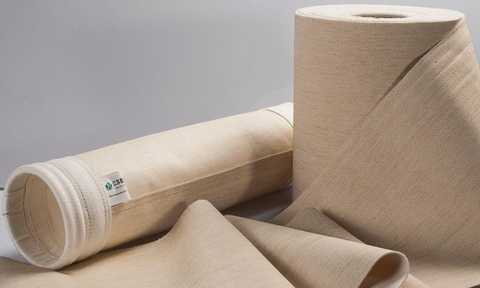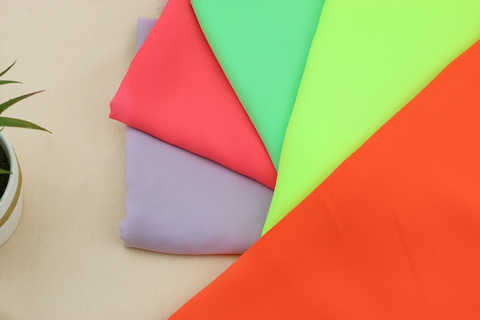Polyester is an important variety in synthetic fiber and is the trade name of polyester fiber in China. It is a fiber-forming polymer prepared by esterification or transesterification and polycondensation of purified terephthalic acid (PTA) or dimethyl terephthalate (DMT) and ethylene glycol (EG). - Polyethylene terephthalate (PET), fibers made by spinning and post-treatment.

Polyester fiber characteristics
1. high strength. The short fiber strength is 2.6 to 5.7 cN/dtex, and the high strength fiber is 5.6 to 8.0 cN/dtex. Due to its low hygroscopicity, its wet strength is essentially the same as the dry strength. The impact strength is 4 times higher than that of nylon and 20 times higher than viscose.
2. Good elasticity. The elasticity is close to that of wool, and when it is stretched by 5% to 6%, it can be almost completely recovered. The wrinkle resistance is superior to other fibers, that is, the fabric is not wrinkled, and the dimensional stability is good. The modulus of elasticity is 22 to 141 cN/dtex, which is 2 to 3 times higher than that of nylon. Polyester fabric has high strength and elastic recovery, so it is durable, wrinkle-free and non-iron.
3. The heat-resistant polyester is produced by a melt spinning method, and the formed fiber can be further heated and melted, and is a thermoplastic fiber. Polyester has a higher melting point and a smaller specific heat capacity and thermal conductivity, so the heat resistance and heat insulation of the polyester fiber are higher. It is the best among synthetic fibers.
4. Good thermoplasticity and poor resistance to melting. Polyester is the most heat-resistant fabric in synthetic fabrics due to its smooth surface and tight internal molecules. It is thermoplastic and can be made into pleated skirts with long pleats. At the same time, the polyester fabric has poor resistance to melting, and it is easy to form holes in the case of soot or Mars. Therefore, wear should avoid contact with cigarette butts, sparks, etc.
5. Good wear resistance. Wear resistance is second only to nylon with the best abrasion resistance, better than other natural and synthetic fibers.
6. Good light resistance. Lightfastness is second only to acrylic. Polyester fabrics have better lightfastness, and their lightfastness is better than natural fiber fabrics except for acrylic fibers. Especially in the back of the glass, the light fastness is very good, almost the same as acrylic fiber.
7. preservative. It is resistant to bleaches, oxidants, hydrocarbons, ketones, petroleum products and inorganic acids. Resistant to dilute alkali, not afraid of mildew, but hot alkali can decompose it. There is also a strong resistance to acid and alkali, UV resistance.
8. Dyeing is poor, but the color fastness is good and it is not easy to fade. Because there is no specific dyeing group on the polyester molecular chain, and the polarity is small, the dyeing is difficult, the dyeability is poor, and the dye molecules are not easy to enter the fiber.
9. Poor hygroscopicity, wearing a stuffy feeling, and easy to bring static electricity, staining dust, affecting the beauty and comfort. However, it is very easy to dry after washing, and the wet strength is hardly reduced, it is not deformed, and it has good washing and wearability.

The difference between polyester fiber and polyester
Many people think that polyester fiber and polyester are two different things. In fact, both of them refer to the same raw materials. Polyester fiber is the world's universal title. It is mainly because it is the earliest name of the product. It is now the universal title in the world; polyester is the title of China, and polyester fiber in China is generally polyester.
The basic constituent of polyester is polyethylene terephthalate, the molecular formula [-OC-Ph-COOCH2CH2O-]n, so also known as polyester fiber (PET), the chemical structure of its long-chain molecule is H(OCH2CCOCO)NOCH2CH2OH The relative molecular weight is generally around 18,000~25000. In fact, there are still a small amount of monomers and oligomers present. These oligomers have a low degree of polymerization and are present in a cyclic form. Polyethylene terephthalate can be obtained by polycondensation of terephthalic acid (PTA) and ethylene glycol (EG) by direct esterification to obtain ethylene terephthalate 9BHET).
From the molecular composition of polyester, it is composed of a short aliphatic hydrocarbon chain, an ester group, a benzene ring, and a terminal alcohol group. In addition to the presence of two terminal alcoholic hydroxyl groups in the polyester, there are no other polar groups, and thus the polyester fibers are extremely poor in hydrophilicity. Polyester has about 46% ester group. The ester group can be hydrolyzed and pyrolyzed at high temperature. When it is alkali, it will be hydrolyzed to reduce the degree of polymerization. Polyester molecules also contain aliphatic hydrocarbon chains, which can make polyester molecules have certain Flexibility, but because there are benzene rings in the polyester molecule that cannot be rotated inside, the polyester macromolecules are basically rigid molecules, and the molecular chains are easy to maintain the linear shape. Therefore, the polyester macromolecule easily forms crystals under this condition, so the crystallinity and orientation of the polyester are high.
Editor in charge: Xu Yuehua
Unisex Running Shoes,Unisex Sports Shoes,Unisex Tennis Shoes,Unisex Football Boots
Huaying Shoes Co. Ltd , https://www.qzhuayingshoes.com